There is a fantastic radio competition this weekend brought to you by the VKQRP CLUB.
QRP HOURS CONTEST – 80m – is on 9th April 2022
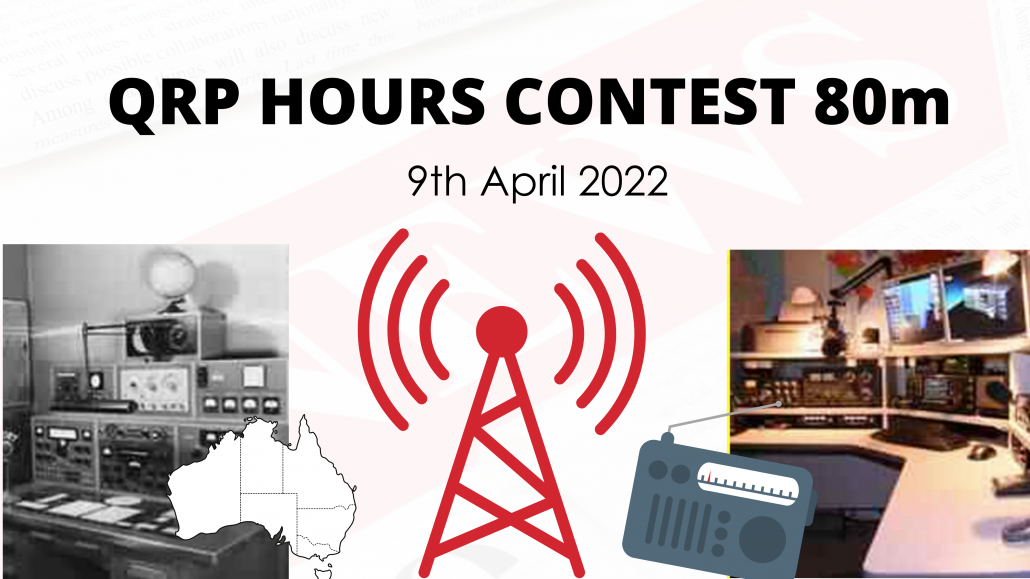
Image and information via the VKQRP CLUB: The VK QRP Club exists for those who enjoy low power amateur radio.
What is it?
the AIM of this contest is to make as many contacts as possible on the 80 metre amateur band only and only during 2 separate time intervals: 1000-1059 UTC – for CW and digital modes, and 1100-1159 UTC – for SSB and digital voice.
Who can enter? The competition is open to Both QRP Club Members and all licensed amateurs.
What gear do I need? The Xiegu G-90 is ideal for this contest because it covers the 80 metre amateur band and the power can be adjusted to the 10 watt SSB or 5 watt CW limits.
Our TRA HF Portable Dipole antenna would also be perfectly suited to this comp.
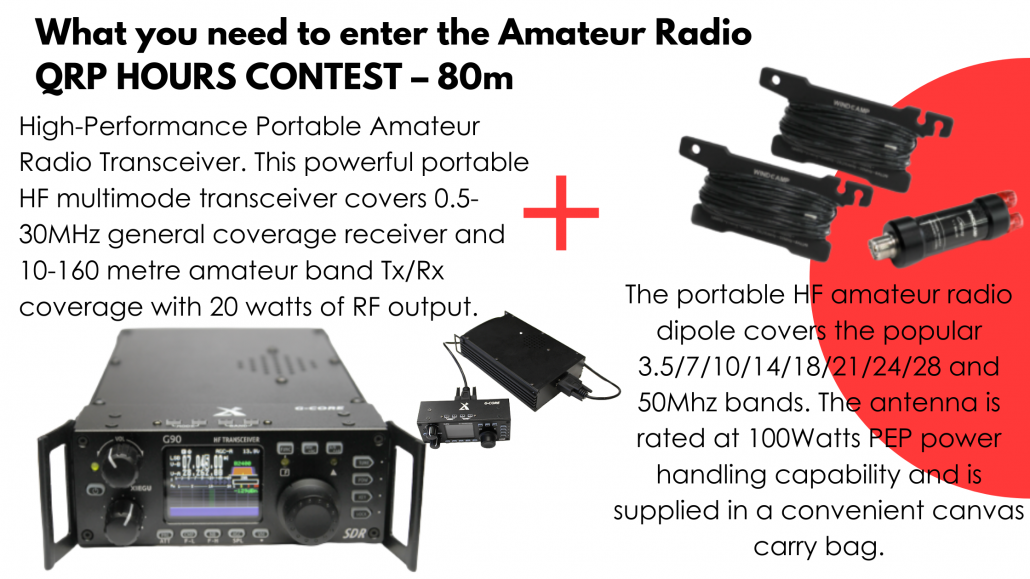
The Contest Rules
Output Power Limit: 5 watts CW/Digital, 10 watts peak on SSB. Modes: First Hour – CW/Digital Second Hour – SSB/Digital voice Frequencies: CW 3.500-3.535 MHz Digital 3.570-3.600 MHz – 3570 Dial freq suggested SSB/Digital voice 3.535-3.570 and 3.600-3.700 MHz Exchange a three-digit serial number starting at 001 and incrementing by 1 for each new contact.
Those continuing from the first hour to the second (in a new mode) can optionally continue to increment exchange numbers.
There is no need to restart from 001 in the 2nd block. Score one point per contact.
Digital: Any digital mode may be used subject to the power being limited to 5 W and the mode being allowed by the operator’s licence. Modes such as FT8, FT4, PSK31, RTTY are the most likely to be used.
Every digital contact must be initiated and controlled by the operator, no auto-sequencing is to be used.
Logging Software: 1. VKCL Logger now has an option for this contest. It outputs in Cabrillo V3 format and is compatible with the VK Log Checker. After completing the contest, navigate the menu to export the Cabrillo file as that is the only file accepted by the log checker. Details below
2. N1MM logger: go to Alan VK4SN’s website for his instructions on how to use N1MM+ with a user defined contest file, at https://www.vk4sn.com/Contests/N1MMVK and download the UDC file at https://vk4sn.com/downloads/QRPHRSRTTY-N1MM-UDC.zip 3. Another log capture option is to use Fast Log Entry (FLE) in contest mode so it will capture numbers sent and received. Read the user manual. Save log as Cabrillo. Can be used live or after the contest. You may need to edit the output file to be sure it has selected all the options you want.
You can edit with any plain text editor – not Word! ADIF output available for upload to your station log.
Logs produced via VKCL and N1MM (in Cabrillo format only) should be uploaded directly to https://www.vklogchecker.com where you will find a “log upload” option under QRP Hours contest. An automated receipt for the log will be emailed to you.
If uploading the Cabrillo file fails, please email your Cabrillo file to contests@vkqrpclub.org.
If you cannot use one of those loggers, please send your log by email as a text file, or excel spreadsheet. No PDFs please. Log deadline is 8 days after the contest.
Certificates will be awarded to the highest scorers in each Mode.
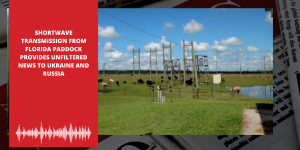
Unbeknown to many, MIAMI based broadcaster WRMI, one of the largest shortwave radio operations in the world, has a huge shortwave antenna array in a paddock north of Lake Okeechobee in Central Florida. This shortwave broadcaster is able to beam high power signals to Europe, when it is needed most!!
As we know, shortwave was mostly used during the world wars as a means of communication and propaganda distribution. Many countries including U.S. Services like the Voice of America and Radio Free Europe have scaled back shortwave services due to the rise in TV and internet services. However, since the invasion of Ukraine, Russia has shut down journalism as we know it, meaning those sources have been either blocked or heavily filtered. Shortwave radio is now the only way the Russian population can access unbiased reporting of the current conflict.
As the crisis unfolds in Russia and Ukraine you will see more and more people tune in once again to their shortwave radios to access unfiltered news and events.
Russia is “attempting to pass a law making journalism essentially illegal, imposing a 15-year criminal penalty” according to Kate Neiswender, one of the teams organising funding for news programming for Russian audiences.
Neiswender and fellow former journalists formed a fundraiser to beam news into Russia, where state-controlled media, at best, does not tell the true story of the invasion and many Russian citizens have no clue about the severity of the invasion.
Link below to donate.
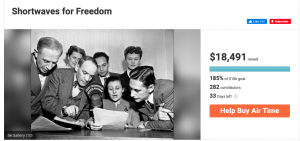
So, back to this massive shortwave radio antenna in a Florida paddock… The general manager of Miami-based WRMI, Jeff White says “We have 14, 100,000-watt transmitters and 23 antennas beaming to all parts of the world,”
Why is it important? Thanks to funding it is currently providing much needed unfiltered information and news of the invasion, beamed over in Russian, Ukrainian and even in English with no censorship.
There is also no shortage of shortwave radios and radio listeners in Russia so this can be accessed fairly easily.
This highlights the importance of shortwave radio in the modern age.
Click here if you are interested in contributing to the fundraising efforts to keep uncensored news flowing into Russia and Ukraine.
Information source thanks to https://miami.cbslocal.com/ WRMI
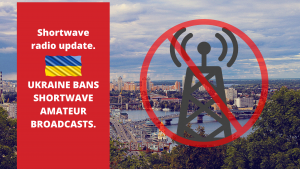
The world watches as the crisis in Ukraine unfolds. The Ukrainian government has imposed a state of emergency. This state of emergency allows the authorities to temporarily limit the public’s constitutional rights.
This includes a ban on producing and spreading information that may “destabilise the situation as well as a ban on amateur radio communications during the current conflict with Russia.
To supplement shortwave broadcasts to that country, shortwave broadcaster WRMI (USA based) initially resumed its relays of the daily English language broadcast of Radio Ukraine International, the official overseas service of Ukrainian Radio. (This information is most probably provided to WRMI from the Ukraine via secure internet). Subsequent to this, WRMI reverted to broadcasting in Ukranian.
RUI (Radio Ukraine International) can be heard daily, except Friday, at 1200-1230 UTC on 5010 kHz.
Historically shortwave radio has been banned in Poland and Russia during times of conflict despite it being a critical source of emergency communication.
Our thoughts and prayers are with those currently in conflict.


